When Mom Has a Secret
An Exclusive Report on a Family Torn Apart
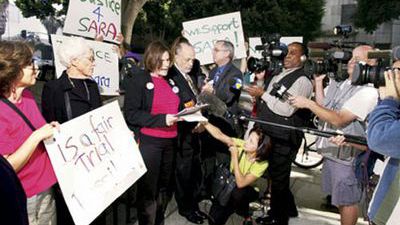
The singer tonight at Rossi's Blue Star in Minneapolis is a moody vocalist dressed in tight black pants and a peasant blouse, her blonde hair teased into an early-'70s shag. She's performing in a place billed as a jazz club, though it smells more like french fries and hamburgers than pinot noir and Chanel No. 5. The room is nearly empty save for the guy shouting "'Free Bird,' baby!" from his seat near the door, and the group from the Farming Equipment Manufacturers convention standing at the bar with their backs to the stage. She may not have the rapt attention of the crowd, but holding the mike tightly to her lips, she belts out Bob Marley's "Redemption Song" with all her heart.
"Emancipate yourselves from mental slavery," she sings, shutting her eyes and swaying on her black high heels. Her dangly earrings sparkle in the stage light. "All I ever had ... redemption songs."
Few people here at Rossi's could ever guess why Sophia Peterson, 25, is so passionate about the song and the prospect of redemption. As it happens, she is the daughter of Sara Jane Olson, a 60-year-old former member of the Symbionese Liberation Army (SLA), the terrorist group forever known for the 1974 kidnapping of newspaper heiress Patty Hearst. Sophia's mother joined the SLA under her birth name, Kathleen Soliah, several months after the Hearst kidnapping and was involved in a bank robbery in Carmichael, CA, the following year, in which a 42-year-old woman, Myrna Opsahl, was killed. Shortly after that, Olson was involved in the attempted bombing of two police cars. With the law in pursuit, she changed her name, became a fugitive, moved to Minnesota, got married, and gave birth to three daughters: Emily, Sophia, and Leila.
For decades, she remained silent about her life with the SLA. But on June 16, 1999, when Sophia was 17, the FBI finally tracked down Olson — now an accomplished chef, a volunteer who worked with torture victims, and that iconically American thing, a soccer mom — on a quiet street near her home in suburban St. Paul. For two years, her case remained in limbo. Then, on October 31, 2001, during the height of the 9/11 terror frenzy, Olson pleaded guilty to attempting to blow up police cars and was eventually sentenced to 14 years at the Central California Women's Facility in Chowchilla.
Now Olson sits behind bars, and her family is left to deal with the fallout from the mother of all secrets.
How does it feel when Mom is on America's Most Wanted? I couldn't stop thinking about it. Olson's daughters, now 26, 25, and 20, had never granted an interview to the press, so I got in touch with one of their family friends, a lawyer, and asked him to deliver a letter to Olson's husband, Gerald "Fred" Peterson. Two weeks later, Peterson e-mailed me a guarded response: "Generally, I'm neutral to negative on media matters because inevitably attention and comments are drawn to our three daughters." Still, he invited me to "breakfast" — late on an October afternoon, since he works the night shift as an emergency-room physician. In a way, the Olson story began back in the 1970s when the SLA was known for a string of violent acts, including the murder of Oakland school superintendent Marcus A. Foster, bank robberies, kidnapping, and bomb-making. Members of the organization claimed they were fighting for the vague cause of "social justice" and demanded an unusual ransom from Hearst's father, Randolph Hearst: $6 million in food for the hungry. ("Death to the fascist insect that preys upon the life of the people!" was the SLA motto.) But for all their noise and notoriety, there were fewer than 14 members. ("Who are the Symbionese, exactly?" journalist Tom Shone of the London Sunday Times later wrote, "and why do they need liberating?")
It would have been comical — if it hadn't been so bloody. On May 17, 1974, six SLA members were killed at their Los Angeles hideout on East 54th Street in a shoot-out with the police. Hundreds of officers had surrounded the small bungalow, demanding that group members, including Olson's close friend Angela Atwood, turn themselves in.
Stay In The Know
Get exclusive access to fashion and beauty trends, hot-off-the-press celebrity news, and more.
"Unfortunately, they didn't surrender," former California police officer Tom King, 58, tells me. He is the son of police commander Mervin King, who led the raid, and he watched the event on TV that day. "They didn't want to be taken alive. They wanted to be revolutionaries. [Olson] and her friends were more than progressive people. They were radicals."
I am prepared for some version of radical when I walk into the Highland Grill, a diner in downtown St. Paul, where I am meeting Fred Peterson for the first time. Instead, I get Middle America academic: Sitting patiently in a booth, Fred is wearing wire-rimmed glasses and a long-sleeved black shirt. His gray-speckled beard matches his shaggy gray-brown hair, which is casually brushed off his forehead. I am surprised that daughter Emily has come with him. Slender, with long eyelashes, heavy mascara, and thick hair reaching past her shoulders, Emily maintains a defensive posture. On the subject of the SLA's radicalism, she says, "Back then, everyone was."
At 26, Emily is almost the same age as her mother was during the raid in '74. "She lived in Berkeley," Emily says, trying to explain her mother's affiliation with the SLA. "It was kind of normal." A moment later, she's telling me how she was raised in a perfectly ordinary, close-knit, left-leaning family. Her dad played in a Toots & the Maytals-inspired band, Pressure Drop; her mom was a fan. Reggae is a passion the daughters share with their parents.
Emily says she thinks of her family secret as a problem, but not a serious one. I'm not convinced. When I press her for details, she fidgets with her purse — anything to avoid eye contact.
Olson's notoriety contrasts starkly with her upbringing in a middle-class North Dakota family. Talking about her Norwegian roots, Olson once described her grandparents' farm in Fargo as a place where "the milk came into the house in pails from the barn."
But in 1971, Olson headed for the San Francisco Bay area, and everything changed. She enrolled in a women's studies class at UC Berkeley and befriended Atwood, who would later join the SLA. Berkeley was rife with revolutionary groups, and Olson found the SLA's call for social justice to her liking. That, say her friends in St. Paul, led to her downfall.
As Olson's interest in the SLA increased, so did the group's clashes with the law: After their L.A. hideout came under police attack (Olson was not there at the time), they fired on the officers, who responded with tear-gas grenades. Flames poured from the bungalow. Atwood and the others remained inside. They died in the inferno.
It was a wrenching moment for those watching the drama play out on television — and even more so for Olson and others who lost friends in the assault. "That became Sara's private business," says Fred. "The LAPD massacre of the SLA was a bellwether event — the first televised SWAT team — " "Team murder," Emily interrupts.
Two weeks later, on June 2, 1974, Olson, or Soliah as she was known, stood on a grassy patch in Berkeley's Ho Chi Minh Park and spoke at a memorial rally for Atwood and the other SLA members killed in the siege. "Angela was a truly revolutionary woman," she said, climbing onto a platform. From a nearby building, the FBI filmed the gathering. "Among the first white women to fight so righteously for their beliefs and to die for what they believed in." For an aspiring actress like Olson, it was the performance of a lifetime. She wore enormous sunglasses and a red turtleneck; her hair flowed freely down her back. Standing with her hands clasped in front of her, she led the crowd in cheering for the SLA.
"Keep fighting!" she shouted. "I'm with you!"
At our booth at the Highland Grill, Fred recommends the salmon scramble. The diner has a small-town coziness — the kind of place with Capricorn coffee mugs and daily specials written on a chalkboard.
"I always tell people she wasn't a terrorist. She was an urban guerrilla," says Emily, smearing Blistex on her lips while waiting for the waitress to return. Like her mother, Emily has long hair and pale skin — a classic beauty. Today, she's wearing a pink blouse that's peeking out from beneath a worn black leather jacket.
Along with her looks, she's inherited her mother's passion for social issues, working as a Head Start teacher with homeless 3- and 4-year-olds from a Minneapolis shelter to help them prepare for kindergarten. "It's hard," she says. "A lot of these kids don't even have coats or boots."
"Head Start has a history that goes back to the '60s," says Fred, who graduated from Harvard and did his residency at the University of Minnesota. "I'm really proud of my daughter."
Emily watches her father intently when he speaks, especially when he's talking about her mother, describing Olson's interest in theater. She sighs. "They're so dedicated to each other," she says, leaning forward in her seat so she can hear the familiar story of how he and Olson met.
It was 1976. Olson, who'd been on the lam for months, had settled in St. Paul and was working as a cook for a University of Minnesota fraternity. Fred first saw her at a garbage facility behind the apartment buildings they lived in.
"You met at a Dumpster!" says Emily, gently teasing her father. "You thought she was kind of cute."
Well, yes. And they had a lot in common. Fred had belonged to a left-wing organization, Students for a Democratic Society, and supported antiwar candidate Eugene McCarthy at the 1968 Democratic National Convention in Chicago. Olson was into Nikki Giovanni, a radical black writer, and, naturally, Bob Marley. "She used to read poetry and be so intense and dramatic," he says. "A little overly dramatic," says Emily.
What was it like being raised by two hippies?
"We got everything we wanted," says Emily, recalling her parents' laid-back style of discipline. "Maybe they argued some. Dad was working a lot, and then he'd come home, and she'd go to plays. They were both long-distance runners, and they'd run marathons. We'd watch and cheer."
Did Olson's daughter know about her mother's past?
"There would be no reason for her to tell us," Emily says. Her mother, she adds, was a private person — most of the things Emily knows about her family history come from her father. "I don't even know if I ever asked Mom anything. I always asked Dad."
What her mother lacked in a past, she made up for in face time with her kids — driving them to soccer games, helping with homework. Still, Emily admits, some things were hard to explain — like the fact that she and her sisters never saw their maternal grandparents. (As a fugitive, Olson kept her distance from anyone the police might be watching.)
"She was just kind of estranged from her family," says Emily. "I figured she had issues with them as a young adult, and her family had some problems with her views. We'd say, 'Do I have another grandma?' And she'd say, 'Oh, we don't talk to them.' We were like, 'Okay, whatever.'"
So Mom had a secret, I say.
"It's not like it was that bad a secret," Emily bristles, sliding back in the booth.
And what about Fred? After all, he was a bright, curious young doctor when he met his wife. Did he suspect anything?
When I pose the question, Emily watches her father closely. At 57, he looks like the kind of guy you could tell your troubles to — maybe even those involving an outstanding federal warrant for your arrest.
"I knew there was something," he says finally. "But I didn't know any details." He speaks carefully. One wrong word and he could be prosecuted for harboring a fugitive. "Twenty years in prison," he explains.
As Fred sees it, his wife's story has been mythologized by the press. "Crime novels from the 1930s have this theme — 'living on the lam,'" he says. "You know, The Fugitive Becomes a Soccer Mom. They're all stereotypical images of deceit. None of that applies when you're just living a life and raising kids. People would say to me, 'How could you accommodate such a depraved criminal mind? How can you live with the knowledge of what happened in the past?' It captures the American psychodrama. But it was not real."
Here's the reality: 24 years after fleeing California, Olson's past slapped right up against her soccer-mom present. At 8:21 a.m. on June 16, 1999, Olson was driving her minivan to the community center to tutor a client when she saw the flashing lights of a police car in her rearview mirror. She pulled over. "FBI, Kathleen," an agent announced when she rolled down her window, addressing her by her birth name. "It's over." It was an understated moment; passing cars probably thought she was getting a speeding ticket.
At 2:30 p.m., Emily, then 18, was finishing her shift at a local fast-food Mexican restaurant. Sophia walked in.
"I was like, 'What is she doing here?'" Emily recalls. "She said, 'Emily, we have to leave now. Mom's been arrested. There are cameras outside our house.' I thought, This is crazy. This is bad. I'd just graduated from high school. I thought, This is going to be awful for my little sister. We were scared. That day was surreal." She tries to convey the horror of that afternoon. "We were afraid she was going to be in prison for the rest of her life — or tortured."
Then came the media onslaught, including a Website that traced the history of Olson and the SLA in relentless detail. There was creepy online chatter — "Everybody was fair game," says Fred. "The girls had countless Web-based threats."
"Perverts," says Emily. "Nasty perverts."
What kinds of things did they say?
"Rape and murder threats," says Fred. "In bad grammar."
One year after being sentenced to 14 years for her efforts to bomb police cars, Olson pleaded guilty to second-degree murder for Opsahl's death. If she'd hoped for a sympathetic ruling after spending more than two decades rebuilding her image, September 11, 2001, put an end to that fantasy. Before the 9/11 attacks, someone like Olson would have been seen as a student activist. But the criteria for holding people accountable for radical political activity — particularly the kind that involved violent acts — changed. Suddenly, she was lumped into a group that included al Qaeda members and suicide bombers. In such a climate, a lenient sentence was unlikely.
With her family sitting in the courtroom, Olson was sentenced to an additional six years in prison.
A week after meeting with Emily, I am standing next to Sophia in the kitchen of the Tudor-style house she shares with her father, a chunky gray cat, and a collection of towering potted plants dating back to the '70s. It's on a quiet, suburban street with leaf-strewn lawns and blue recycling bins on the curb. Though Olson has not been here since 2002, her influence is apparent: The kitchen smells like Kona Blend and nine-grain bread; cookbooks clutter the shelves.
It's Monday, the day after Sophia's jazz-club performance. Leaning against the kitchen counter, she is wearing cat's-eye glasses, jeans, and a gray sweater. While brewing a cup of coffee, she talks about Rossi's Blue Star, her love of reggae, and her dreams of studying at the New School in New York City's Greenwich Village. (City Chic: An Urban Girl's Guide to Livin' Large on Less is lying on the table.) In the meantime, she's studying psychology at the University of Minnesota.
Sophia misses her mom — a lot — and can hardly believe she is in prison. "In the end," she says of Olson's sentencing, "we had to watch our mother be pulled away by two big cops. The aftereffects have been debilitating. I don't know if people can understand that." Her family was always considered weird, she says, because the girls actually liked their parents. As if on cue, the phone rings. It's Olson, calling from Chowchilla.
Sophia goes upstairs to take the call, and I wander into the dining room, which is decorated with crystal vases, pewter candlesticks, and flower-print curtains. An antique case displays a collection of miniature milk jugs and ceramic creamers. A pack of Orbit Wintermint gum is on the table, alongside an abnormal psychology textbook, Dashiell Hammett's Red Harvest, and Dostoevsky's Crime and Punishment.
Her phone call finished, Sophia comes back downstairs and tells me no one can understand the suffering her family has experienced. She has a flair for drama: Describing her mother's reaction to the second World Trade Center tower collapsing, Sophia places her hand over her heart and slouches toward the ground: "She said, 'I'm screwed.'"
Earl Balfour, a retired tool-and-dye worker, is sitting at a wooden table in Mayday Books on Cedar Avenue in Minneapolis, where Olson volunteered in the 1990s. He's wearing a felt cap and faded jeans and has tobacco-stained fingernails. A rickety bicycle leans against the table. Hanging on an exposed-brick wall, next to an "Impeach the President!" poster, is a portrait of Eugene V. Debs, the five-time socialist presidential candidate in the early 20th century.
"You know what? I never was quite sure what her politics were," Balfour says of Olson. "There she was, this doctor's wife, rolling in money. They had an exercise room as big as this store in their home. So there was a certain tension."
I mention that her family seems rather unpretentious. "Rich is an attitude," he tells me. "For example, if it were snowing, it would never dawn on her to go out and shovel the walk. She might get her designer shoes wet." And then the story broke in the papers....
"I was astounded," he says. "I thought, Holy shit. Sara Jane. She'd show up at the picnic with the guacamole. Who would have believed it?"
Others in the St. Paul community were appalled. "A lot of people call the city 'St. Small,'" says Nick Coleman, a Minneapolis Star Tribune columnist. "There's only two degrees of separation. One of the many charms of a place like this is that you think you know people. And then you don't."
St. Paul, he says, was taken in.
"She betrayed the people who befriended her by having lived this secret life. Her family and her friends have suffered incredibly," he says. "At some point, you have to face these charges. And even though she had a family, the only honorable way out of this dilemma was to turn herself in. I'm kind of mad about it, to be honest."
A staff member at the Center for Victims of Torture says a client — the one whom Olson was on her way to tutor at the time of her arrest — was emotionally scarred by the revelation. "It was difficult," she explains. "Torture destroys a person's trust in anyone or anything. Learning that a person who had volunteered was not who they said they were was traumatic."
Mostly, though, people were just stunned. "She was a talented actress and a good organizer," says an acquaintance of the family, Peter Erlinder. "But really, bottom line, she was an ordinary person."
Today, Emily and Sophia take turns going out to Chowchilla to visit their mother about once a month. Olson is expected to be released in November 2009, and many friends from Minnesota remain loyal — passionately so.
Olson was a "spectacular artist," says a friend and member of their church. Sitting in her cluttered office, she recalls how Olson used to appear in local theater productions. "That woman does have charisma. To this day, it doesn't really make sense to me. She's a very gentle person. I think what Sara is guilty of is having made a bad choice of friends."
Not a woman who needs redeeming, then?
"Redemption?" she shakes her head. "For Sara, I don't see any — she was already rehabilitated, if that needed to be done. She's there to be punished."
It's 11 o'clock at night, hours after my visit with Sophia at the family home. In my hotel room, I log on to my computer. I'm surprised to find an e-mail from her. In a heated, 17-line message, she says she wants nothing more to do with the article. It's an emotional outpouring, and she sounds angry and paranoid — convinced I will distort her version of events. It's a different person from the free-spirited vocalist I met at Rossi's Blue Star.
I wonder why she has decided to tell me this now. She'd known for weeks about the story; my business card was tacked up on her bulletin board.
Fred, too, retreated after our meeting in the diner, though in less explosive terms, expressing mixed feelings about the "tough questions" I'd asked. "Sara would express caution for sure — if not be outright chagrined," he wrote in an e-mail. "Thanks for dinner?"
Via e-mail, I ask Emily if I can see her again. She wrote back this: "We, as a family, have experienced a deep hardship and sadness with our mother being away from us. About meeting with you on Sunday, I will have to see if I feel up to it on that day. I have your cell phone."
She never called.
-
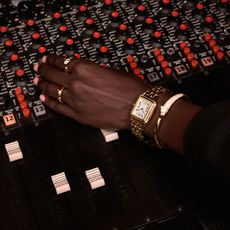 Ring in the Holidays With Cartier
Ring in the Holidays With CartierThe perfect duet of timelessness and elegance.
By Anneliese Henderson Published
-
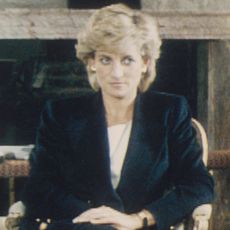 Princess Diana's Former Lover Opens Up About "Unforgivable" BBC Interview
Princess Diana's Former Lover Opens Up About "Unforgivable" BBC InterviewJames Hewitt spoke about the royal's controversial 1995 sit-down with Martin Bashir.
By Kristin Contino Published
-
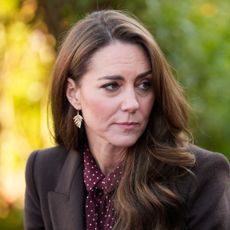 Princess Kate Takes the Lead on an Ordinary Household Task That Leaves Prince William Clueless
Princess Kate Takes the Lead on an Ordinary Household Task That Leaves Prince William Clueless"I have no idea what I'm doing."
By Amy Mackelden Published
-
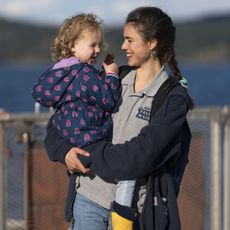 Netflix’s ‘Maid’ Helped Me Open Up About Domestic Violence
Netflix’s ‘Maid’ Helped Me Open Up About Domestic ViolenceThe show is being praised for its portrayal of emotional abuse and other underrepresented forms of DV.
By Linsey Maughan Published
-
 My Mom and I Share the Same Husband
My Mom and I Share the Same HusbandA mother and daughter having sex with the same man may sound hard to believe, but it's a necessity for women in one Bangladeshi tribe. Not that they're thrilled about it.
By Abigail Haworth Published
-
 The Modern Motherhood Conflict
The Modern Motherhood ConflictIn a controversial new book, firebrand French philosopher Elisabeth Badinter argues that modern motherhood is a throwback to the pastand has become a tyranny for women
By Pamela Druckerman Published
-
 Confessions of A Real-Life Flight Attendant
Confessions of A Real-Life Flight AttendantFlirtatious pilots and sexcapades with passengers make the new show Pan Am seem positively professional.
By Jennifer Miller Published
-
 The Accidental Sex Offender
The Accidental Sex OffenderIt was a classic teenage love story. He was a football star, and she was a cheerleader. They met, they fell in love, they started having sex. And then the cops got involved. Fifteen years later, they're still paying the price.
By Abigail Pesta Published
-
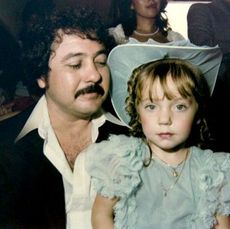 Mexico's Female Drug Lords
Mexico's Female Drug LordsWhen Estrella Hermila Ramos's gangster father was gunned down by the local drug cartel, she didn't mourn him—instead, she made a play for his turf.
By Monica Campbell Published
-
 The Daughter of the Disappeared
The Daughter of the DisappearedWhen Victoria Donda learned that her supposed father was accused of being a notorious torturer in Argentina and that her true parents were political prisoners, she soon unraveled a web of family secrets and lies.
By Mei-Ling Hopgood Published
-
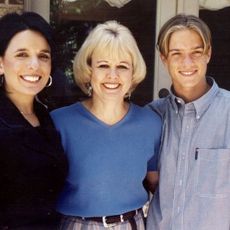 A Family Affair
A Family AffairIt was horrifying enough when Melissa Tamplin's mother was savagely stabbed to death. But in her wildest dreams, she never guessed her own sibling was behind the murder.
By Amy Paturel Published